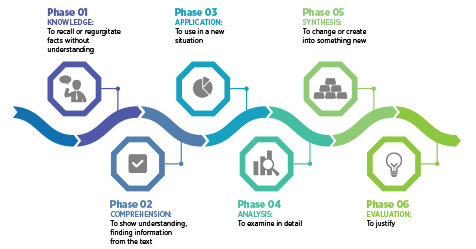Adult learners have unique characteristics you should consider when constructing training courses. Most are eager to learn, but need to see how they will benefit from the training. They prefer active, rather than passive, learning and do well with hands-on activities rather than sitting through 40 slides on how to do something.
Our job as trainers is not to know everything, but to lead the class in learning. Part of that learning can come from other students, so tap the experience adult learners bring to your class. One way to draw out experiences from your students is to use a formula called “ROPES” for laying out learning objectives.
Relate
Have you ever attended a class that covered a subject you knew nothing about? Chances are you felt a little lost and unsure of yourself. If you flip that scenario, you also have probably attended a class where you were familiar with the subject matter and the new information you learned was easy to grasp and understand.
Learning is much easier when your brain knows where to file the information. The first step in ROPES—Relate—is to show learners how the new information they are going to learn expands on something they already know and where they should file this new information. This is an important step because it establishes relevance for the material and allows adult learners to see that this is important information.
Overview
The next step—Overview—sometimes blends in with Relate. In overview we want to give learners a summary of the activities for this learning objective. Showing learners how you will cover a topic lets them know what to expect. This will help to keep them focused and ready to learn in class.
Presentation
The Presentation step is generally where instructors invest the bulk of their time. Keep in mind that when you see the word “presentation” it does not automatically mean “PowerPoint presentation.” If you are going to use PowerPoint, I would recommend following a few simple tips:
- Keep it short and remember that you are the presentation, not the PowerPoint slides. The slides should simply reinforce what you say.
- Don’t put every word of your presentation on the slides and do not read your slides.
- Keep text to a minimum. If you put a lot of text on your slides, the students will take their attention away from you to read the slides. Remember the 6 x 6 rule: no more than six lines with no more than six words per line.
Avoid the temptation to overwhelm your learners with all the available information on a topic. Give them what they need to know, especially if regulatory or safety issues are part of the topic.
Exercise
The next step, Exercise, should contain the meat of the learning objective. This is when the learners are going to do something with the instruction they just received. Exercise also forces recall of the information. The more the brain recalls information and uses it, the more likely it is to make a home for this information in the learner’s long-term memory.
The possibilities in this step are endless. Anything you can do to get the students interacting and using the information you just presented should be effective. Here are some of my favorites:
- Create and launch quizzes from your computer using Kahoot!, a free website. Students see the questions and answer from their own mobile device.
- Break the class into groups and assign each group a subject to discuss and then teach to the rest of the class.
- Use role play to immerse learners in an environment that replicates a specific situation. Role play can be a simple as creating scenarios on paper for them to work through and as elaborate as staging a real environment that looks and feels like the environment where they will need to use the learning.
- Create a sorting exercise to have learners demonstrate the steps in a process they just learned. Combine this exercise with the teaching exercise explained above for a very effective experience.
Summarize
The final step in ROPES is Summarize. This is when we take a few minutes to review what we have learned, answer any lingering questions, and close out each learning objective. One of my favorite activities in this step is to have each student share one thing they will do differently based on what they just learned.
The Heart of Training
Engaging your learners is truly the heart of your training program. Create a class that will allow your students to effectively gain new knowledge by showing them how it builds upon what they already know and why it is important to them. After sharing your information, let them take their new knowledge for a test drive.




